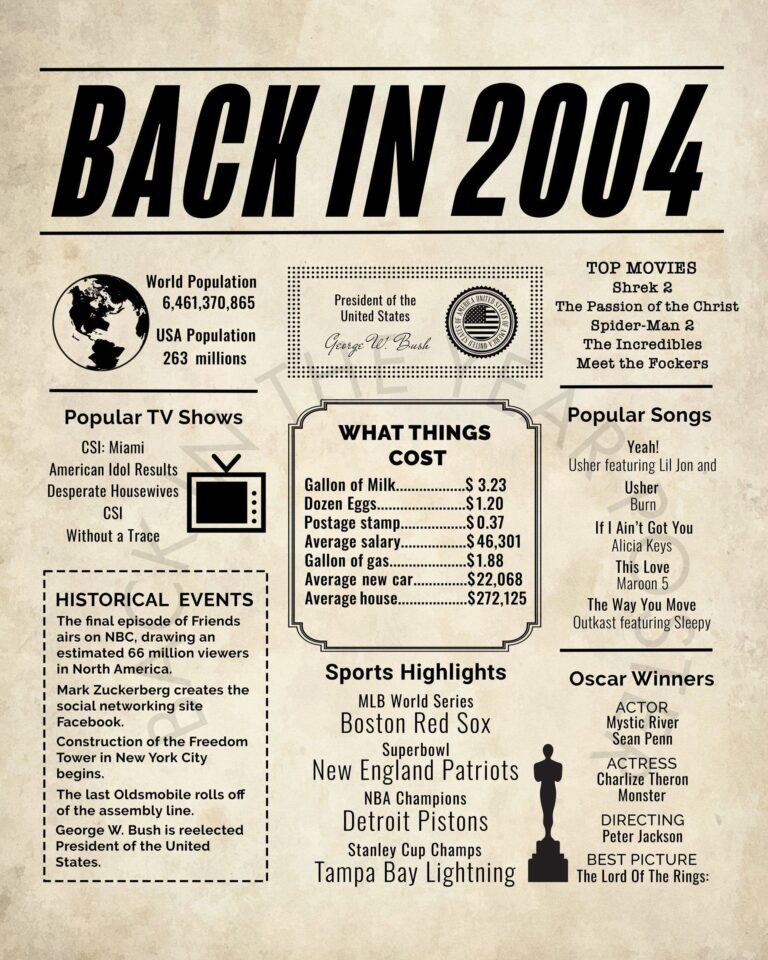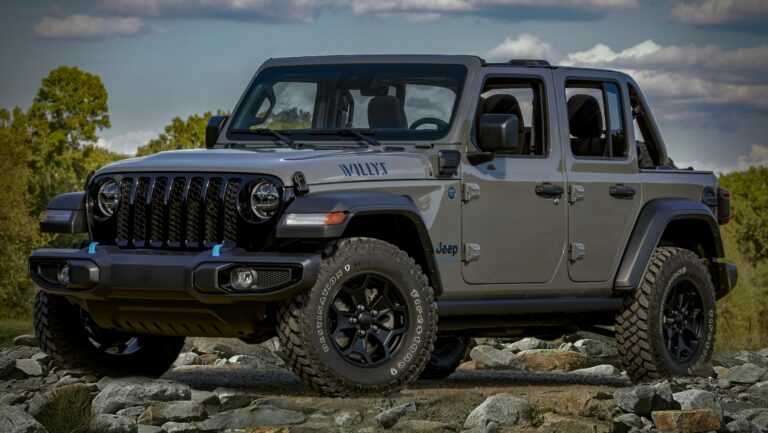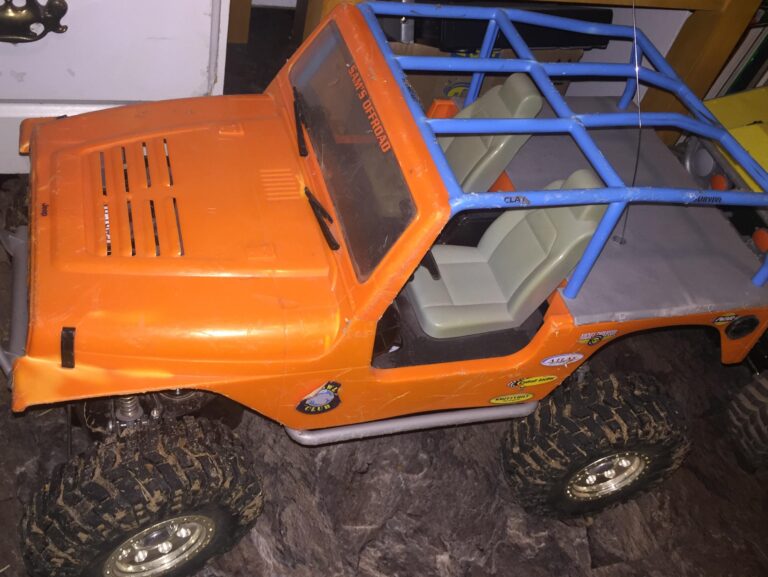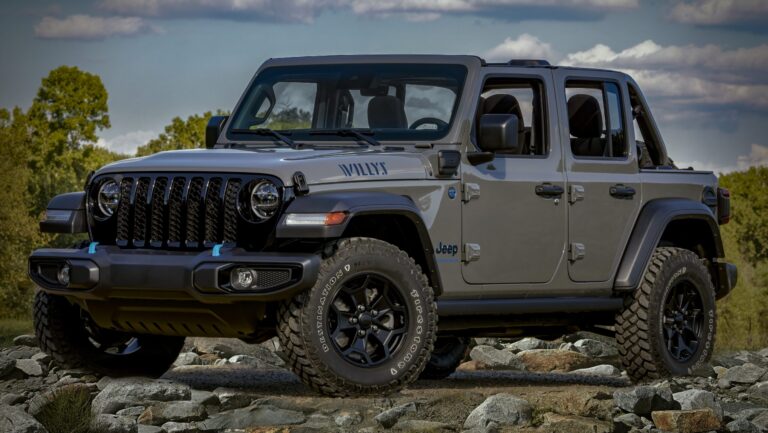Classic Jeep Grand Cherokee For Sale: Your Comprehensive Buyer’s Guide
Classic Jeep Grand Cherokee For Sale: Your Comprehensive Buyer’s Guide jeeps.truckstrend.com
The allure of a classic vehicle often lies in its timeless design, robust engineering, and the promise of a more tactile driving experience. Among the pantheon of iconic American automobiles, the Jeep Grand Cherokee, particularly its early generations, stands out as a beloved classic. For enthusiasts, off-roaders, and those seeking a capable yet affordable SUV, the phrase "Classic Jeep Grand Cherokee For Sale" conjures images of rugged capability, surprising comfort, and endless customization potential.
This article serves as a comprehensive guide for anyone considering purchasing a classic Jeep Grand Cherokee. We’ll delve into what makes these vehicles special, what to look for, common challenges, and how to ensure your investment brings years of adventurous driving.
Classic Jeep Grand Cherokee For Sale: Your Comprehensive Buyer’s Guide
Defining the Classic: ZJ and WJ Generations
When we talk about a "classic" Jeep Grand Cherokee, we are primarily referring to the first two generations:
-
The ZJ Generation (1993-1998): This was Jeep’s groundbreaking entry into the luxury SUV market, combining the ruggedness of a traditional Jeep with a more refined interior and ride quality. It introduced features like the Quadra-Trac full-time 4WD system and optional V8 engines.
- Key Engines: The venerable 4.0L inline-six (I6) was standard, known for its bulletproof reliability. Optional V8s included the 5.2L (318 ci) and, for a single year in 1998, the high-performance 5.9L (360 ci) V8 in the limited-production 5.9L Limited model, which is highly sought after today.
- Transfer Cases: Command-Trac (part-time 4WD, common on lower trims), Selec-Trac (part-time or full-time 4WD), and Quadra-Trac (full-time 4WD, found on higher trims).
- Appeal: Known for its solid axles front and rear (D30 front, D35 or D44a rear), making it a highly capable off-road platform right out of the box. Its boxy, utilitarian design has aged gracefully.
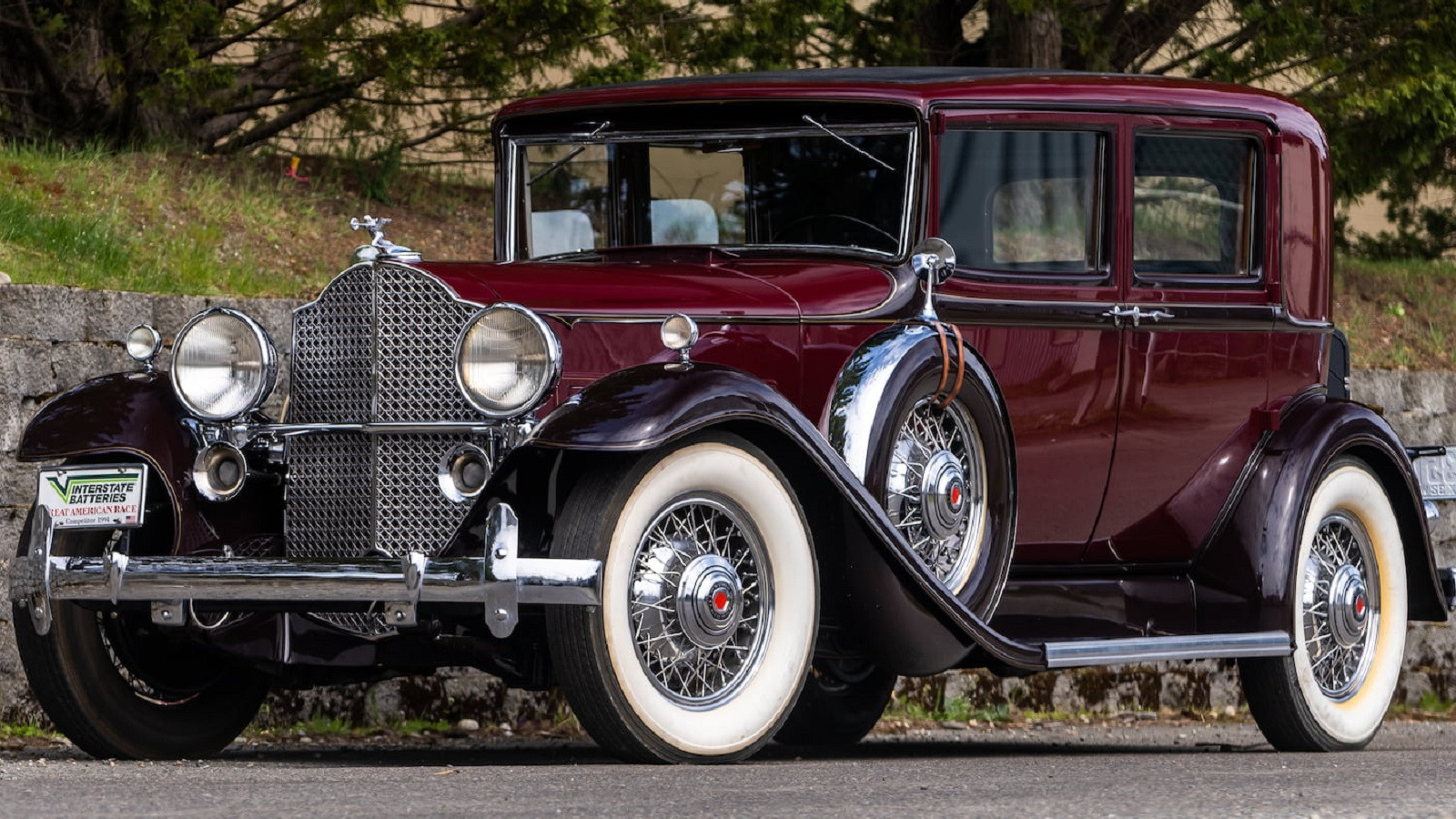
-
The WJ Generation (1999-2004): The WJ brought a significant redesign, offering a smoother ride, more modern aesthetics, and improved powertrain options. While retaining much of the ZJ’s off-road prowess, it emphasized on-road comfort and safety features.

- Key Engines: The 4.0L I6 continued, but the big news was the new 4.7L PowerTech V8, which offered more power and efficiency than the outgoing 5.2L. A high-output (HO) version of the 4.7L was introduced later.
- Transfer Cases: Selec-Trac (part-time/full-time) and the revolutionary Quadra-Drive, which utilized Vari-Lok differentials at both axles for superior traction without needing driver intervention.
- Appeal: More refined ride quality, updated interior, and the highly effective Quadra-Drive system make the WJ an excellent all-rounder. It’s often considered the sweet spot between classic ruggedness and modern convenience.

These generations are considered "classic" due to their age, distinct design, robust mechanicals, and the strong community following they have garnered. They represent an era before the Grand Cherokee fully transitioned into the more car-like, unibody SUVs of today.
Why Buy a Classic Grand Cherokee? Benefits and Appeal
The decision to purchase a classic Grand Cherokee goes beyond mere transportation; it’s about embracing a lifestyle. Here’s why these vehicles remain highly desirable:
- Exceptional Value for Money: Compared to newer SUVs with similar capabilities, a classic Grand Cherokee offers an incredibly affordable entry point. You get a lot of vehicle for your dollar, leaving room in the budget for maintenance or modifications.
- Legendary Off-Road Prowess: Thanks to their solid axles (especially the ZJ) and robust 4WD systems (Quadra-Trac, Quadra-Drive), these Jeeps are highly capable off-road machines. They can tackle trails, navigate challenging terrain, and perform admirably in snow or mud.
- Durability and Simplicity: Built during an era when vehicles were designed to be robust and repairable, classic Grand Cherokees are known for their strong components. The 4.0L I6 engine, in particular, is legendary for its longevity, often exceeding 200,000-300,000 miles with proper maintenance. Their relative simplicity makes them appealing for DIY mechanics.
- Immense Customization Potential: The aftermarket support for ZJ and WJ Grand Cherokees is vast. From lift kits, heavy-duty bumpers, and rock sliders to engine performance upgrades and interior enhancements, you can tailor your classic Grand Cherokee to perfectly suit your needs, whether it’s an extreme off-roader or a comfortable overland rig.
- Timeless Design and Character: Both the ZJ and WJ possess a distinct, classic SUV aesthetic that stands apart from modern, often anonymous, designs. Owning one offers a sense of nostalgia and connection to Jeep’s rich heritage.
- Practicality as a Daily Driver: If well-maintained, a classic Grand Cherokee can serve as a reliable and comfortable daily driver. They offer ample cargo space, a commanding driving position, and a comfortable ride (especially the WJ).
What to Look For: A Buyer’s Guide to Classic Grand Cherokees
Purchasing any older vehicle requires a thorough inspection. For a classic Grand Cherokee, attention to specific areas can save you significant headaches and expenses down the line.
-
Rust: This is the #1 killer of older vehicles.
- Frame: Inspect the unibody frame rails, especially near the suspension mounting points and behind the front wheels.
- Rocker Panels: These are highly susceptible to rust. Check for bubbling paint or soft spots.
- Floorboards: Lift the carpets to check for rust, especially near the pedals and under the rear seats.
- Wheel Wells and Fenders: Look for rust around the edges and inside the wheel wells.
- Underbody Components: Exhaust, fuel tank straps, suspension components.
- Tailgate: Particularly around the window and handle on ZJs.
-
Engine Condition:
- 4.0L I6: Listen for ticking (exhaust manifold crack is common but not critical), knocking, or excessive smoke. Check for oil leaks around the valve cover, oil filter adapter, and rear main seal. Inspect coolant for signs of oil.
- 5.2L/5.9L V8 (ZJ) & 4.7L V8 (WJ): Listen for knocks or excessive valvetrain noise. Check for oil and coolant leaks. Ensure no overheating issues. The 5.9L is prone to manifold bolt issues.
- Fluid Levels and Condition: Check oil, coolant, power steering, and brake fluid. Milky fluids indicate problems.
-
Transmission:
- Shift Quality: Drive the vehicle and feel for smooth, timely shifts without harshness or slipping. Test all gears, including reverse.
- Fluid Condition: Check the transmission fluid. It should be red/pink and smell sweet, not brown/black or burnt.
- Transfer Case: Engage 2WD, 4WD High, 4WD Low (if applicable), and Neutral. Listen for grinding or clunking. Check for leaks around the seals.
-
Suspension and Steering:
- "Death Wobble": This infamous issue is characterized by violent shaking of the front end at certain speeds (usually 45-60 mph) after hitting a bump. While fixable, it indicates worn steering/suspension components. Check the track bar, tie rods, ball joints, control arm bushings, and steering stabilizer.
- Shocks and Springs: Look for worn or leaking shocks. Sagging springs can indicate heavy use or age.
- Brakes: Test pedal feel and stopping power. Listen for grinding or squealing.
-
Electrical and Interior:
- Power Windows: Test all windows; motors often fail.
- HVAC System: Check if A/C blows cold and heat works. Test all fan speeds and blend door operation (a common WJ/ZJ issue where air only blows from defrost or floor vents).
- Gauges and Lights: Ensure all dashboard lights and gauges work correctly.
- Interior Condition: Assess seats for rips, headliner for sagging, and dashboard for cracks (common on ZJs).
-
Documentation: Request service records if available. A clean CarFax or AutoCheck report can reveal accident history, previous owners, and mileage discrepancies.
-
Pre-Purchase Inspection (PPI): If you’re serious about a vehicle, invest in a PPI by a trusted mechanic, ideally one familiar with Jeeps. They can spot issues you might miss.
Common Issues and How to Address Them
Owning a classic Grand Cherokee means being prepared for typical age-related issues. Understanding them can help you budget and troubleshoot.
- "Death Wobble": As mentioned, this is often caused by worn front suspension/steering components. The most common culprits are a loose or worn track bar, followed by ball joints, tie rods, and control arm bushings. Replacing these components with quality parts (e.g., Moog, Synergy) and ensuring proper alignment is the solution.
- Engine Leaks (4.0L I6): The valve cover gasket, oil filter adapter o-rings, and rear main seal are common leak points. These are generally DIY-friendly repairs, though the rear main seal requires dropping the transmission.
- HVAC Blend Door Issues (ZJ/WJ): The plastic blend doors inside the dashboard can break, preventing proper air direction or temperature mixing. Repair often involves removing the dashboard, a labor-intensive job. Aftermarket metal blend door kits are available for a permanent fix.
- Electrical Gremlins: Power window motors, various sensors (crankshaft position sensor, oxygen sensors), and instrument cluster issues can arise. Many are straightforward sensor replacements.
- Rust: While challenging, rust can be managed. For surface rust, wire brushing and rust conversion treatments work. For structural rust, cutting out and welding in new metal is often necessary. Regular washing, especially after winter, helps prevent new rust.
- Cooling System Weaknesses: Radiators, water pumps, and fan clutches can wear out, leading to overheating. Proactive replacement of these components, especially on higher-mileage vehicles, is recommended.
Maintenance and Ownership Tips for Your Classic Grand Cherokee
To ensure your classic Grand Cherokee provides years of reliable service, consistent maintenance is key.
- Follow a Strict Maintenance Schedule: Don’t skip oil changes, filter replacements (air, fuel, oil), and fluid flushes (transmission, transfer case, differentials, coolant, power steering, brakes).
- Grease Zerk Fittings: Many steering and suspension components have grease fittings. Regularly grease them to extend their lifespan, especially after off-roading or washing.
- Monitor Fluid Levels: Check all fluid levels regularly. Any significant drops could indicate a leak.
- Address Small Issues Promptly: A small oil leak or a slightly loose steering component can quickly escalate into a major problem if ignored.
- Invest in Quality Parts: When replacing components, opt for reputable brands over the cheapest option. This often saves money in the long run.
- Join Online Communities: Websites like JeepForum.com, NAXJA.org (for XJ/ZJ), and GrandCherokeeClub.com are invaluable resources. You’ll find detailed DIY guides, troubleshooting tips, and a supportive community of fellow owners.
- Budget for Repairs and Upgrades: Remember, you’re buying an older vehicle. Expect to put some money into it for preventative maintenance, repairs, and perhaps modifications.
Classic Jeep Grand Cherokee For Sale: Estimated Price Guide
The price of a classic Jeep Grand Cherokee varies significantly based on its generation, mileage, mechanical and cosmetic condition, trim level (e.g., Limited, Laredo, Overland), and region. The rare 5.9L Limited ZJ and higher-spec WJ Overland/HO models command premium prices.
Here’s a general estimated price range for classic Grand Cherokees (ZJ & WJ generations) in the USA:
| Generation | Condition Category | Estimated Price Range (USD) | Key Factors Influencing Price |
|---|---|---|---|
| ZJ | Project/Parts Vehicle | $500 – $1,500 | High mileage, significant mechanical issues, heavy rust, non-running. Ideal for parts or a full restoration project. |
| (1993-1998) | Fair/Runnable Condition | $1,500 – $4,000 | Running, driving, but likely needs deferred maintenance, some cosmetic issues, minor rust. Good budget daily driver/off-roader. |
| Good/Well-Maintained | $4,000 – $8,000 | Mechanically sound, minor cosmetic flaws, minimal rust, good service history. Ready for daily use or light trails. | |
| Excellent/Collector Grade | $8,000 – $15,000+ | Low mileage, pristine condition, rare models (e.g., 5.9L Limited), extensive service records, no rust. Investment potential. | |
| WJ | Project/Parts Vehicle | $800 – $2,000 | High mileage, significant mechanical issues, heavy rust, non-running. |
| (1999-2004) | Fair/Runnable Condition | $2,000 – $5,000 | Running, driving, needs some work, cosmetic flaws, some rust. |
| Good/Well-Maintained | $5,000 – $10,000 | Mechanically sound, good interior, minor flaws, minimal rust. Strong daily driver or capable off-roader. | |
| Excellent/Collector Grade | $10,000 – $18,000+ | Low mileage, pristine condition, rare trims (e.g., Overland, 4.7L HO), full service history, no rust. |
Note: These are general estimates. Prices can fluctuate based on market demand, regional availability, specific modifications, and the urgency of the sale. Always factor in potential repair costs when evaluating a purchase.
Frequently Asked Questions (FAQ) about Classic Grand Cherokees
Q: What years are considered "classic" Grand Cherokees?
A: Generally, the first two generations: the ZJ (1993-1998) and the WJ (1999-2004).
Q: Are classic Grand Cherokees reliable?
A: Yes, particularly those with the 4.0L inline-six engine, which is known for its longevity. However, like any older vehicle, reliability depends heavily on previous maintenance and addressing age-related wear and tear. Expect some common issues but nothing insurmountable.
Q: What’s the best engine for a classic Grand Cherokee?
A: For ultimate reliability and ease of maintenance, the 4.0L I6 is often recommended. For more power, the 5.9L V8 (ZJ) or 4.7L HO V8 (WJ) are excellent choices, though they may have slightly higher fuel consumption and some specific maintenance considerations.
Q: Are parts hard to find for classic Grand Cherokees?
A: Generally, no. Due to their popularity and the large number produced, most mechanical and common body parts are readily available new (aftermarket and OEM) and used. Some specific trim pieces or interior components for rarer trims might be harder to source.
Q: Can I use a classic Grand Cherokee as a daily driver?
A: Absolutely, if it’s in good mechanical condition and well-maintained. Many enthusiasts use their ZJs and WJs for daily commuting, benefiting from their comfort, space, and all-weather capability.
Q: What is "death wobble" and how do I fix it?
A: "Death wobble" is a violent, uncontrollable shaking of the front end that occurs at certain speeds (usually 45-60 mph) after hitting a bump. It’s caused by worn or loose components in the front steering and suspension system. Common fixes involve replacing the track bar, tie rods, ball joints, and control arm bushings.
Q: Is it expensive to maintain a classic Grand Cherokee?
A: Routine maintenance costs are comparable to many other SUVs of their era. However, you should budget for potential repairs due to age and wear. DIY repairs can significantly reduce costs, as parts are often affordable and the vehicles are relatively simple to work on.
Q: What’s the difference between Quadra-Trac and Quadra-Drive?
A: Quadra-Trac (ZJ era) is a full-time 4WD system with a viscous coupling in the transfer case, allowing for differentiation between front and rear axles. Quadra-Drive (WJ era) is an advanced full-time 4WD system that adds Vari-Lok limited-slip differentials to both the front and rear axles, providing superior traction by automatically sending power to the wheels with grip without driver input.
Conclusion
The classic Jeep Grand Cherokee, whether a ZJ or a WJ, represents a golden era of SUV design and capability. They offer an enticing blend of ruggedness, comfort, and customization potential at an accessible price point. While they demand a discerning eye during purchase and consistent maintenance thereafter, the rewards are immense.
Owning a classic Grand Cherokee is more than just having a vehicle; it’s joining a vibrant community, embracing a hands-on approach to ownership, and unlocking a world of adventure. With the right research, a thorough inspection, and a commitment to proper care, your classic Jeep Grand Cherokee will be a reliable companion for years to come, ready to tackle both daily commutes and challenging trails with characteristic Jeep confidence.
![]()

